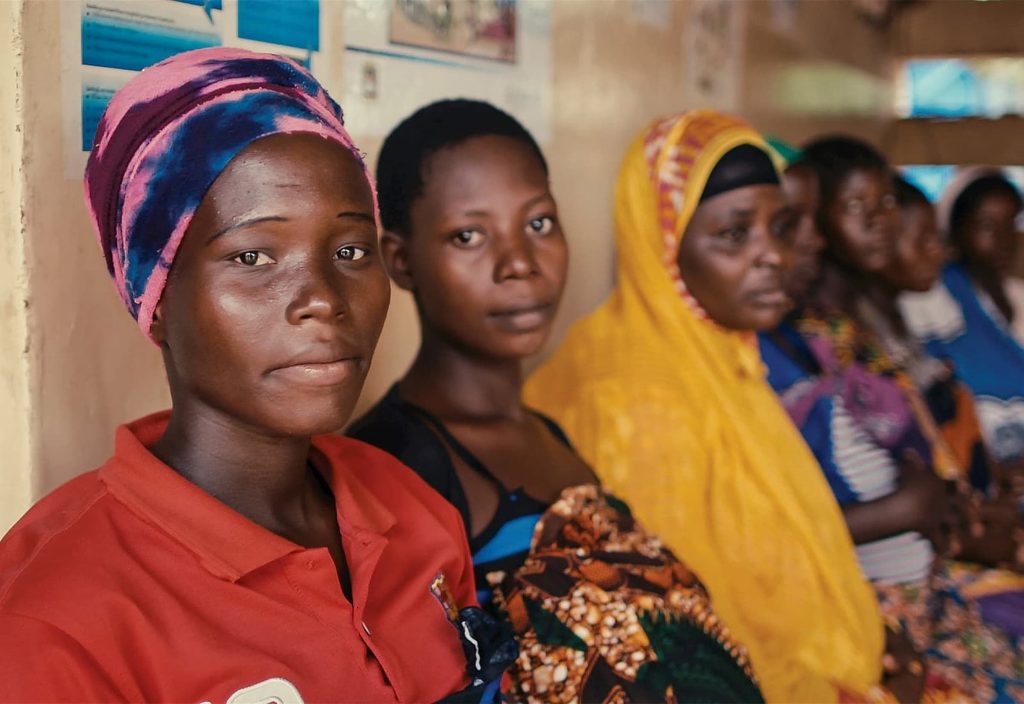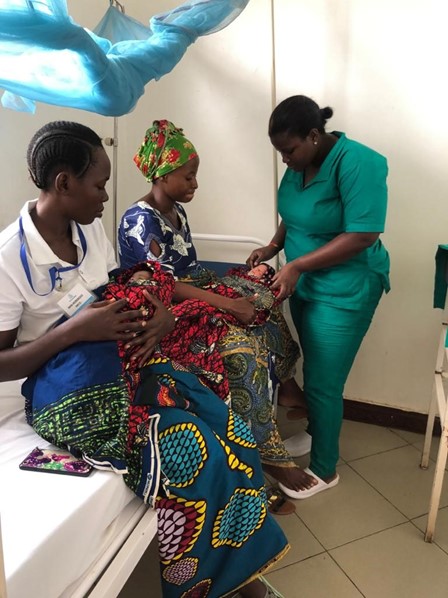For moms everywhere this Mother’s Day: Birth companionship in remote Tanzania

By Thamini Uhai, Tanzania
For over a decade, Bloomberg Philanthropies, Fondation H&B Agerup, and other donors have supported Thamini Uhai, a Tanzanian non-governmental organization, to partner with the government of Tanzania to reduce maternal and neonatal mortality in remote parts of the country. Thamini Uhai’s approach includes improving the availability, access, and utilization of high-quality maternal and newborn services.
Moms: Imagine being alone when you go to a hospital to deliver your baby. Nobody to hold your hand, bring you water, or offer words of comfort during the worst of the pain. And still alone after the baby came and you needed some rest, there was nobody to hold your crying baby. That’s what it used to be like for mothers in Tanzania, where public health facilities discouraged women from having a companion during childbirth because of limited space in the maternity ward and because health providers feared that companions would interfere with the process. The unforeseen result was that women became fearful of going to a health facility for childbirth.
As an organization of medical professionals, we know that having a companion during childbirth not only improves the experience for the mother, but also improves the health outcomes for the mother and newborn. In 2015, it was estimated that there were 556 maternal deaths per 100,000 live births in Tanzania, among the highest maternal mortality ratios in the world at that time. We were convinced that allowing birth companions would help improve the maternal health situation in our country.
So, in 2016, with funding from Bloomberg Philanthropies and Blue Lantern Foundation, we started a birth companionship pilot project in nine health facilities in Kigoma Region of Tanzania. The project was designed to respond to the needs of women, as well as the concerns of health providers. A participatory approach was used to ensure that the introduction of birth companionship strengthened rather than stressed relationships between communities and the health system and would ultimately lead to greater acceptability and sustainability. We co-designed the initiative with all relevant stakeholders – community members, health providers, government officials, and traditional birth attendants – and developed a ‘Code of Good Practice’ which served as the blueprint for implementation.
After six months, the project was starting to take hold in the community. Here’s what one woman said about her delivery experience with a birth companion:
“To be honest, having a birth companion makes you feel really good, we really thank you for bringing us the birth companion because the previous births you were staying there in the labor room alone…”

Mother rests after delivery with her birth companion
And it wasn’t only the women in the community who appreciated the birth companions. The health providers at the facilities found that a companion’s presence enabled them to focus on the necessary medical management of childbirth. The birth companions could assist throughout labor and delivery by encouraging relaxing breathing exercises, providing comfort and massage, bringing water and food, and helping the soon-to-be mother use the restroom.
“The project… helps nurses to determine some maternal and neonatal complications via desired birth companion,” said a Registered Nurse and Midwife from Nguruka Health Center. “Also, the women feel comfortable when delivering because her [companion] continues to give her emotional support and physical support.”
By the end of the project, we found that over 80% of women delivering in the project facilities had a companion, 96% of those women were very satisfied with their companion at the time of childbirth, and 86% said having a companion improved their childbirth experience. In addition, women reported that providers at facilities implementing birth companionship were significantly more respectful and responsive. We shared our findings with the appropriate government agencies in Tanzania, at local Tanzanian public health forums, and published them in BMC Pregnancy and Childbirth.
Given the success of our pilot program, and community demand for birth companions, the national government adopted our program’s guidelines for birth companionship. So now women in Tanzania can bring a companion with them to health facilities when they deliver. Our organization is supporting implementation of this new government policy by introducing birth companionship models in additional health facilities in Kigoma and in a neighboring region (Katavi). We are now looking to help expand birth companionship to other regions to ensure high-quality and respectful maternity care for all women in Tanzania.
We could not have achieved any of this without the dedication and compassion of the birth companions – some of them are mothers themselves, others are family members, friends, or trained community members. One of them captured the heart of this program when she said:
“I accompanied my little sister, who was pregnant with twins, to the health facility and am happy because they welcomed us friendly… They encouraged me because I was so worried for my sister… But I thank God she delivered safely and afterwards I stayed with her, encouraging her to eat and drink, while I took care of the twins.”
